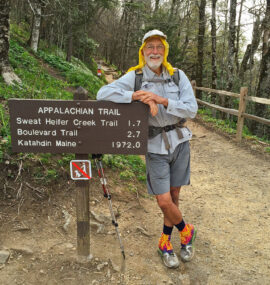Resilience vs. robustness
Biological resilience can be defined as the ability of cells, tissues, organs, and the whole person to recover following stress or injury. This contrasts with biological robustness, which refers to the ability of cells, tissues, organs, and the whole person to maintain a normal state in the face of stress or injury. Both resilience and robustness typically decline with age, although robustness can increase. For example, physical training can lead to greater hip bone strength and reduce risk of hip fracture.
Researchers at Duke University reviewed connections between biological resilience and aging. The decline in biological resilience with aging can lead to reduced longevity even in the absence of chronic diseases. The authors proposed that aging arises from three universal components: 1) depletion of limited bodily resources (stem, immune, neural, and muscle cells), 2) slowdown of physiological processes and responses to stress or damage, and 3) inherently imperfect mechanisms of cell and tissue repair and cleaning. Physical exercise can promote resilience by improving muscle stem cell function and improving mitochondrial function. It is possible that some interventions designed to increase biological resilience might reduce biological robustness by depleting resources otherwise needed to build resistance to stress or injury.
Interventions may boost psychological resilience in older adults
As the US population ages and the proportion of seniors increases, the burden on our medical care system will increase, perhaps more than it can bear. While recent studies show that average life expectancy of certain segments of the US population is increasing, the number of years lost to disability is also increasing. Interventions that promote psychological and social well-being of older Americans might help ease this impending medical burden and foster healthy aging.
A recent review noted that greater psychological and social well-being predict various positive health outcomes, including reduced mortality risk, fewer chronic conditions, and increased use of preventive measures. These improvements might increase resilience due to increased ability to respond resourcefully to chronic stress, greater adoption of healthy behaviors, and improved biological processes. Research shows that interventions that seek to build psychological and social well-being have the potential to promote healthy aging. Methods to boost psychological and social well-being include writing about positive events, expressing gratitude, and practicing prosocial behavior. While much more research is needed, studies thus far suggest that interventions could play a substantial role in helping Americans age better and increase their health span.
Purpose in life may boost resilient aging
One way to understand how purpose in life affects older persons is to ask them. More particularly, two researchers developed eight open-ended questions that they posed to 18 older men and women residents aged 60 to 100 years in Georgia and Florida. The aim of the interviews was to uncover how participants drew upon their life purpose and how it developed across the course of their lives. The responses fell into three domains related to drawing on life purpose and four domains relating to development of life purpose.
Key points relating to using life purpose included: 1) overcoming life challenges to pursue purpose, 2) perspective taking to maintain purpose, and 3) drawing on religious faith. Key points relating to developing life purpose included: 1) background influencing purpose, 2) shifts in purpose across life, 3) fulfilling purpose across life, and 4) obstacles to pursuing purpose in life, and 4) wanting to make a difference in the lives of others. Older adults showed resilience in adapting to life’s challenges. Purpose in life served as a resource for adapting to challenges and transitioning to older adulthood
Geroscience
Professor Elissa Epel at the University of California at San Francisco outlined an agenda for geroscience, which is the intersection of the biology of aging, chronic disease, and health. Epel claims that an interdisciplinary geroscience approach, which focuses on increasing the health span of older adults, will produce more fruit than the whack-a-mole approach of addressing chronic diseases one at a time. According to Epel, stress underlies geroscience. Stress has two forms: toxic and hormetic. The former arises from repeated, high-intensity insults to bodily processes that require the body to make adjustments to re-establish homeostasis. Over time, the physiological and psychological costs of these adjustments accumulate as allostatic load. On the other hand, hormetic stress arises from brief, intermittent, lower intensity challenges to the body, resulting in greater ability to resist or recover from bodily damage. Exercise, properly done, is a prime example of hormetic stress.
Optimal aging may, therefore, arise from avoiding toxic stressors, while employing hormetic stressors to build robustness and resilience and help the body to maintain its current healthy state in the face of challenges or to return quickly to a healthy state following challenges. The nine healthy lifestyle choices that I promote in my book, Choose Better, Live Better, can build robustness and/or resilience. Geroscience has identified biomarkers, such as blood sugar control and inflammation, which predict increased risk of certain chronic diseases and premature death. Thus, geroscience focuses on maintaining biomarkers in healthy ranges rather than on avoiding specific chronic diseases. If geroscience can extend Quality of Lifespan (aka, healthspan) of older adults, studies show that theprice tag of medical treatment might drop substantially, not to mention better quality of life.
What to do
Embrace the healthy lifestyle choice of Defuse Chronic Stress to reduce toxic stress in your life. You have numerous ways to do so including meditation, mindfulness, and reappraisal of certain stressors from threats to challenges. In addition, embrace other healthy lifestyle choices, particularly Keep Moving, Eat Better, Sleep More and Better, Cultivate Social Connections, and Develop a Positive Mental Attitude. Start with one healthy choice and make it part of your daily life. When you’ve accomplished that, embrace another healthy choice, and so on.








